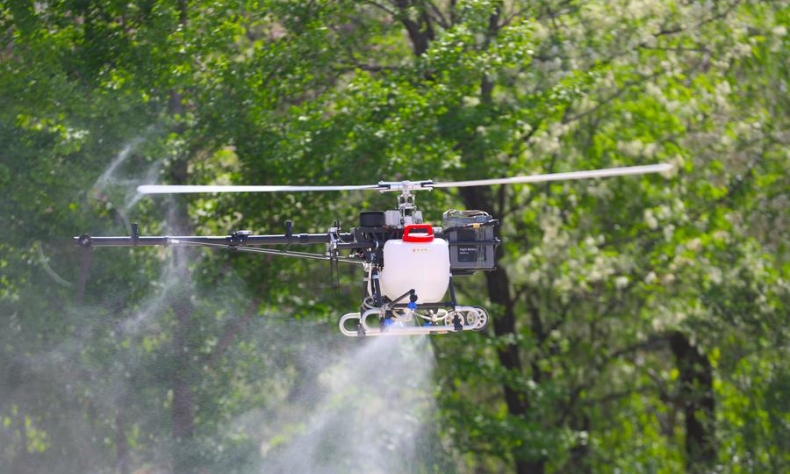Low-Altitude, High-Tech

The low-altitude economy relies on innovation, and this innovation will accelerate technological progress across the board.
The Beijing Municipal Government has recently released a draft action plan on promoting the high-quality development of the low-altitude economy to solicit opinions from the public. According to the plan, by 2027, Beijing will develop a model for low-altitude economy that focuses on emergency rescue, logistics, air taxis, intercity commuting and tourism. In addition to the capital, Guangdong, Anhui and Hunan provinces and some other regions of the country are also laying out plans for the development of the low-altitude economy. Joy flights for tourists, commuting by air, drones as couriers and emergency rescue by drones will become realities in the near future.
The Central Government is attaching great importance to the development of the low-altitude economy and has adopted a number of measures to promote its growth. For example, the Ministry of Industry and Information Technology (MIIT) and four other departments have jointly issued the Implementation Plan for General Aviation Equipment Innovation and Application (2024-30), which aims to facilitate the entry into operation of large and medium-sized fixed-wing aircraft, plateau-operable helicopters and drones, to achieve full coverage by emergency air rescue, and to encourage the development and commercial application of the flying car technology.
Under the guidance of the Central Government, various local governments have incorporated the development of the low-altitude economy into their medium and long-term economic and social development plans. These policy initiatives have been introduced to build the low-altitude economy into a national strategic emerging industry.
There are two main reasons China is attaching such great importance to the low-altitude economy.

First, China is transitioning toward high-quality economic development. Most of the industries involved in the low-altitude economy, such as drones, big data and new materials, are examples of the new quality productive forces China aims to foster. New quality productive forces refer to China’s strategy of driving economic growth through innovative frontier technologies. Also, through continued innovation, the low-altitude economy will generate new technologies and industries, which will become new drivers for high-quality growth.
The low-altitude economy has huge market potential in China. According to a research report released this year by CCID Consulting, a subsidiary of the MIIT’s China Center for Information Industry Development, the scale of China’s low-altitude economy reached more than 505.9 billion yuan ($71.15 billion) in 2023, showing a strong growth momentum. It is expected to reach 2 trillion yuan ($281.29 billion) in 2030.
Second, China plans to create a new model for intensive development through the development of the low-altitude economy. Intensive development is a model adopted in response to the increasing population and land shortages. As traffic pressure intensifies in urban areas, the sky will be the next space in which to expand human development. This new concept calls for development along three dimensions—underground, above ground and in the sky. The development of the low-altitude economy, especially urban air mobility and electric vertical takeoff and landing aircraft, will help ease the pressure on street traffic and provide faster ways to travel.
The low-altitude economy relies on innovation, and this innovation will accelerate technological progress across the board. Its application in emergency rescue, public services and other fields will help better meet the needs of the public. Facilitating movement between different regions as well as between urban and rural areas, it will contribute to balanced regional development and urban-rural development, and the improved allocation of resources.
Moreover, it will help boost urban industrial upgrading, create more job opportunities, attract investment and improve the desirability of urban living. It is also conducive to the promotion of green development, which is in line with China’s goals of carbon peaking and carbon neutrality.
 Facebook
Facebook
 Twitter
Twitter
 Linkedin
Linkedin
 Google +
Google +










